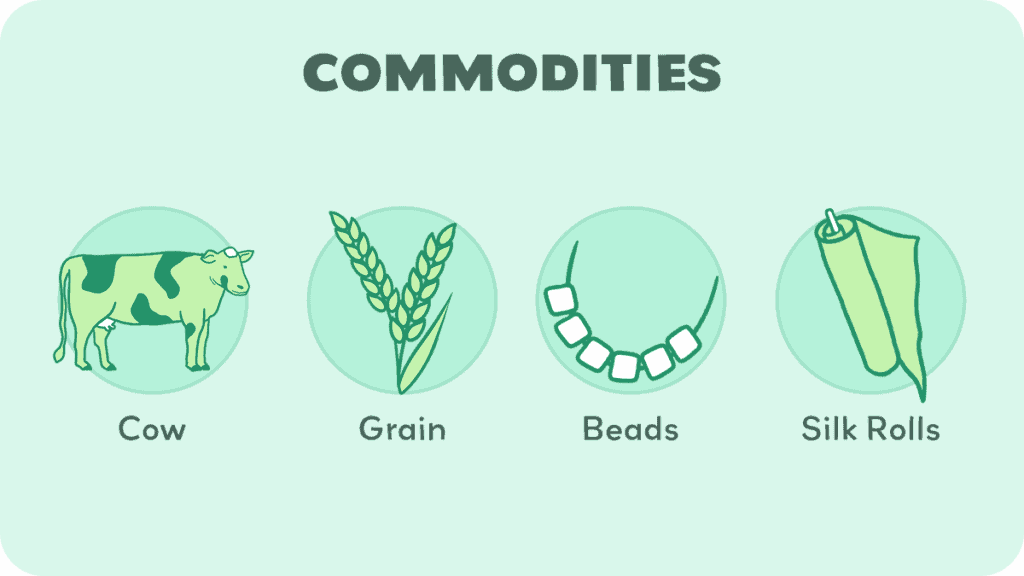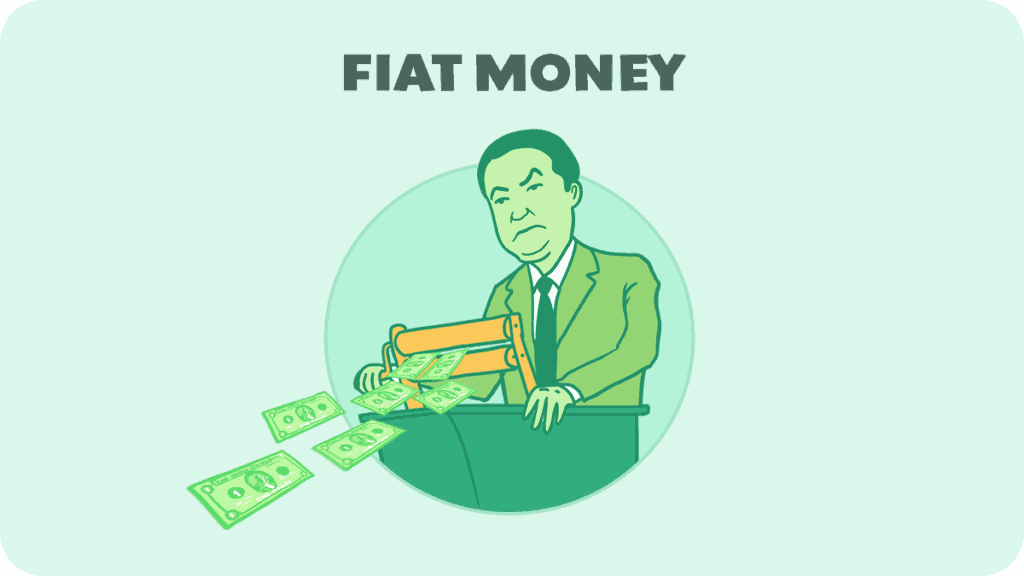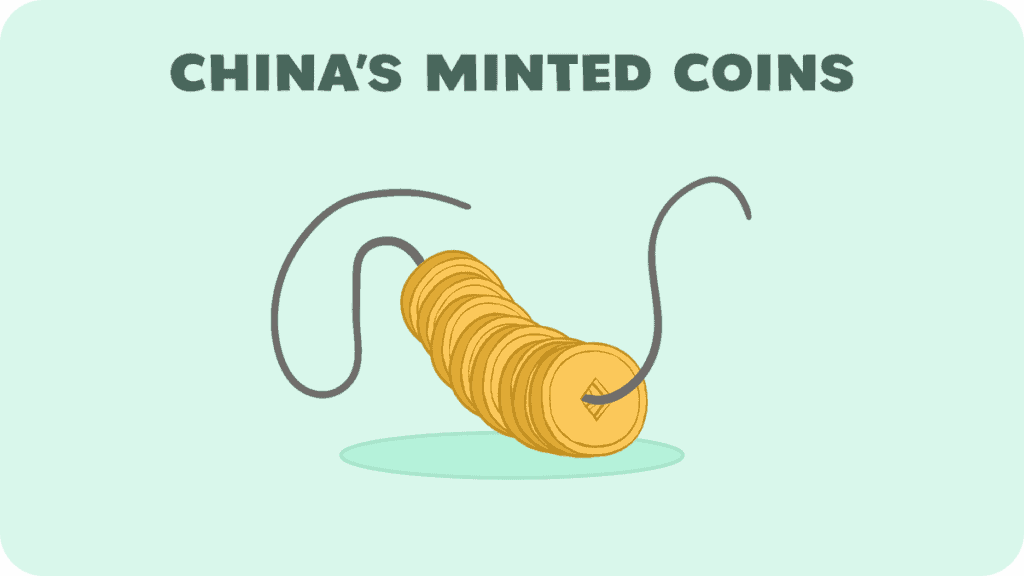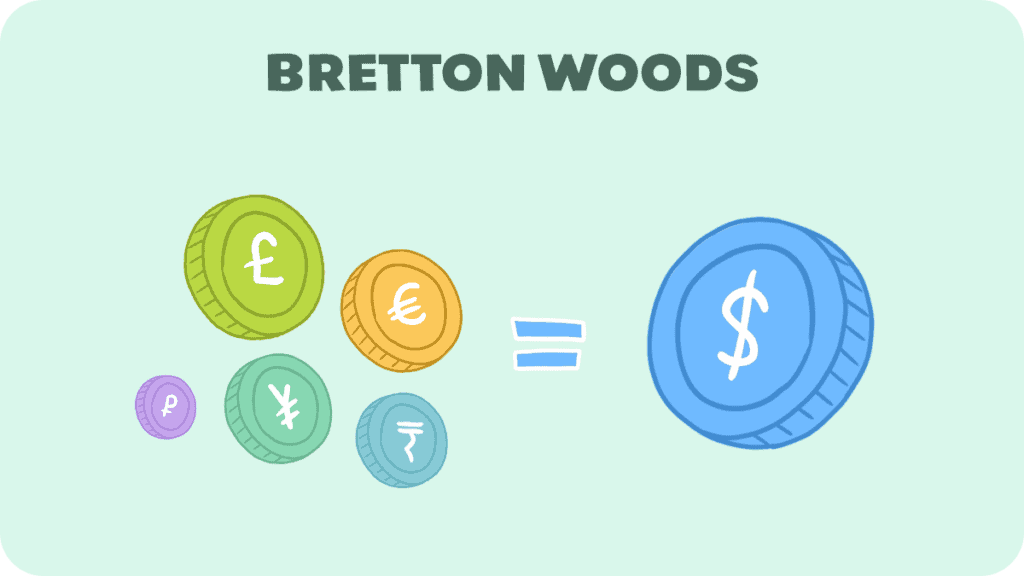Did you collect baseball cards, stickers, marbles, or Pokemon cards as a kid? Did the other kids accept or offer these items as payment for something other than the item itself? If so, you may have experienced a prepubescent form of commodity money.
Though it may be commonplace to swap doubles for a card you don’t have or a sticker you really want, once it becomes widely accepted as a medium of exchange for other things, these childhood items start functioning as money.
For example, you might offer a Bowser sticker for another kid’s ice cream sandwich or agree to help the class dunce with his homework in exchange for that Charizard card you’re missing.
Contrast this with the money we use today, which is issued by the government. It’s paper money that has no value outside its ability to be exchanged for goods and services; nobody is collecting or playing with different denominations of dollar bills (with the exception of rare or out-of-print ones).
Your childhood’s playground economy ran on a form of commodity money, whereas almost all modern economies are based on fiat money. In this article, we’ll compare and contrast the two.
What is Commodity Money?

It’s pretty self-explanatory – commodity money is money made of a commodity. It’s an item that has its own uses and is used to serve the three functions of money – a medium of exchange, a unit of account, and a store of value.
Looking back to your sticker collection, you prized the stickers themselves, but also used them to trade for other things you desired. Many commodities have been used throughout history as money, such as…
- Beads
- Cowry shells
- Tobacco
- Alcohol
- Cigarettes
- Salt
- Tea
- Silk
Historically, the most common has been gold or other precious metals such as silver.
What is Fiat Money?

Fiat money is money printed by the government that has no independent value aside from its use as money.
Basically, the government prints it and says, “This is money”. People trust the government, so they accept this and begin using it as such. It is also not backed by commodities or anything of value. Fiat money includes…
- US dollar
- British pound sterling
- European euro
- Japanese yen
- Mexican peso
- Indian rupee
- Guatemalan quetzal
- Pretty much every other national currency with few exceptions
History of Commodity Money
Commodity money has been used almost as long as people began trading as far back as 6000 BCE. We’ve already mentioned multiple items that have been used as commodity money, but precious metals such as gold and silver quickly became the most common.
They were durable, rare, divisible, and easy to carry around. Furthermore, unlike other commodities like tobacco, salt, or alcohol, precious metals were rarely eaten, smoked, or drunk.
In the 600s BCE, kingdoms began to mint coinage from these precious metals. They would take a standard amount of the precious metal, melt it, mold it in a cast, and stamp it so people knew the amount they were getting.
This began with the Kingdom of Lydia and spread to other realms. Examples of gold coins include the Lydian stater, Roman denarii, Greek drachma, and Dutch Kroner.
History of Fiat Money

The first fiat money emerged in China in the 1200s. Originally, the Chinese government had been issuing paper money backed by commodities where each paper bill represented a certain amount of the item of value (known as representative money).
When they pulled the backing, it became fiat money. The Chinese later discontinued this practice due to hyperinflation (more on that later), but the pattern later repeated in the West.
Originally, people took their commodity money, deposited it, and received notes denoting the amount they had deposited. Governments began issuing currencies with each note backed by a certain amount of precious metal, rather than making their money out of the metal itself.
During times of strife such as World War 1 and the Great Depression, governments pulled this backing.
The transition to fiat money was made permanent in 1971 when the US stopped backing its dollar with gold. Prior to that, or at least between 1944 and 1971, the dollar had been backed by gold, and other currencies were pegged to the dollar.
Since 1971, fiat money has reigned supreme with the global economy running on money backed by nothing except the word of the government issuing it.
Comparisons

This global move towards fiat money was not entirely accidental, however. Governments found that they prefer to issue fiat money for a number of reasons. With that said, let’s compare the two on several metrics.
1) Inflation
One reason governments prefer fiat money to commodity money is inflation. Does this mean that fiat money is better than commodity for inflation? Not really.
Which is better is debatable and depends largely on the competency of the government (which can be scary). It does mean that governments have more control over the issue with fiat money.
Since only the government can issue fiat money, it has complete control over the supply. By tweaking interest rates and creating more or less money, governments can keep the money supply steady and control inflation.
They can also print as much money as they like, leading to hyperinflation as occurred in 1920s Germany, 2016 Zimbabwe, and more recently in Argentina.
Remember we talked about how the Chinese first issued fiat money in the 1200s? Well, they stopped doing it in the 1450s for exactly this reason.
However, as our understanding of economics has increased in the past centuries, governments prefer fiat money because they are confident in their ability to successfully manage inflation.
Contrast this with commodity money, such as gold. Gold is a relatively finite resource, so it will generally be more stable and less prone to inflation. Short of alchemy, nobody can just make more gold.
However, inflation can still occur with the discovery of new sources of gold as occurred in Spain following the discovery and subsequent gold-raiding of the Americas.
Worse, anybody from private companies to toothless prospectors can exploit these new sources, leaving the government without the tools to control it that they would have with fiat money.
2) Intrinsic value
We’ve already hinted at it, but we’ll state it explicitly here – commodity money has intrinsic value. This is one advantage it holds over fiat money. Even if the economy collapses and money becomes worthless, it still has its own uses.
For example, gold can be used in computer wiring and salt can be used to preserve or flavor meat.
Contrast this with fiat money, which would be useless if it couldn’t be used as money. This is why, in times of high inflation or economic uncertainty, individuals often choose to invest in commodities such as gold or silver.
3) Ability to grow with the economy
The flip side of this is that, as the economy grows, so must the money supply. If more goods and services are being produced, people are going to need more money to buy those goods and services.
This is actually one of the primary reasons for the abandonment of the gold standard and the move to fiat money in 1971 – the US had spent so much on military spending and foreign aid that there wasn’t enough gold in the world to back the dollar at its agreed-upon rate.
In the same way that fiat money allows the money supply to be restricted to curb inflation, it can be expanded to spur economic growth. By contrast, the supply of commodity money has nothing to do with economic needs and can’t be manipulated to achieve economic goals.
4) Production costs
Fiat money is also cheaper to produce than commodity money.
We’ve already talked about how fiat money can be created whereas commodity money cannot, but even if we assume that there was an infinite supply of the commodity, fiat money would still be cheaper to produce since the government is literally just printing money (it doesn’t get much cheaper than that).
Pretend the government had a gold mine with an infinite supply of gold. Thus, the limits of commodity money in controlling the money supply don’t apply – whether they use fiat money or gold, the government can make as much or as little as they want at any time.
However, they still have to mine the gold, melt it, and stamp it into currency which is more expensive than simply printing it.
These lower costs result in a real benefit for governments in the form of seignorage. Seignorage refers to the difference between the value of money and the cost to produce it.
For example, say a dollar bill costs one cent to produce. For every dollar they print, the government makes a 99-cent profit. This provides a source of revenue, which allows the government to spend more (which is popular) without raising taxes (which is not).
5) Value tied to the government
One potential advantage of commodity money is that it is not tied to any single government. If the government collapses, commodity money would still have value; fiat money would not.
This is another reason why commodity money can be more stable than fiat money since it does not waver in value with people’s faith in a government’s ability to pay its debts.
In addition to the alternative uses that commodity money has that we discussed earlier, commodity money is likely to continue to be accepted as money through times of political turmoil.
For example, gold has been used as money for thousands of years even as governments have come and gone; there’s no reason to suspect it will cease to be accepted as money should one more government fall. However, the UK pound would not be worth much if there were no United Kingdom.
Conclusion
Fiat money and commodity money are two opposite approaches for a basis for money. Because of the stability of most modern governments, most of today’s economy is based on fiat money due to the flexibility it provides the government in managing the economy.
However, historically commodity money has been more common due to its intrinsic value and the fact that it doesn’t rely on the backing of any single political entity.
We hope this article helped highlight some of the differences between these two popular forms of money. If you’d like to see more articles like this one, please like or subscribe. Have a great day.

